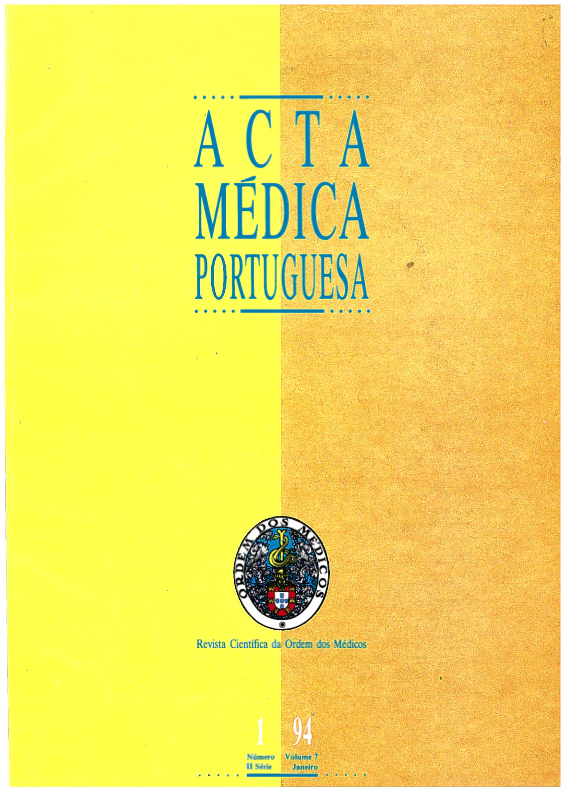Prevalence of asthma in the city of Porto.
DOI:
https://doi.org/10.20344/amp.2828Abstract
It is possible that asthma epidemiology will contribute to the definition of asthma precipitant factors. This work is enrolled in an international study co-ordinated by COMAC-EPI. In Oporto, among 137.000 residents in the same town region, a standardised sample of 4.047 male and female individuals aged from 20 to 44 years was defined. A screening questionnaire was sent with a stamped envelope. Four months later the same questionnaire was sent to the individuals who did not answer it and finally those who do not answer the second letter were visited in their own residence. We got 2075 answers. Among the responders about half were women: 1075, 25.39% belonging (273) to the 20-29 years age group; 42.69% (459) 30-39 years; 31.90% (343) 40-44 years. In men the percentage of distribution by age groups was similar. Question nQ 5 was answered affirmatively by 60 individuals, corresponding to the prevalence of 2.89%. Seventy-one (3.42%) said they had been under asthma treatment during the last year. Among the symptoms that usually define the attack of asthma, those inquired in the group of question 1 show a prevalence close to that of the asthma diagnosis: 6.45%. The prevalence of being awakened by tightness in the chest, shortness of breath and coughing, with values of 16.17%, 10.69% and 25.68% is quite superior than in question nQ 5. The prevalence obtained with the Hay Fever question was 18.84%. Data obtained is similar to the data of other centers.Downloads
Downloads
How to Cite
Issue
Section
License
All the articles published in the AMP are open access and comply with the requirements of funding agencies or academic institutions. The AMP is governed by the terms of the Creative Commons ‘Attribution – Non-Commercial Use - (CC-BY-NC)’ license, regarding the use by third parties.
It is the author’s responsibility to obtain approval for the reproduction of figures, tables, etc. from other publications.
Upon acceptance of an article for publication, the authors will be asked to complete the ICMJE “Copyright Liability and Copyright Sharing Statement “(http://www.actamedicaportuguesa.com/info/AMP-NormasPublicacao.pdf) and the “Declaration of Potential Conflicts of Interest” (http:// www.icmje.org/conflicts-of-interest). An e-mail will be sent to the corresponding author to acknowledge receipt of the manuscript.
After publication, the authors are authorised to make their articles available in repositories of their institutions of origin, as long as they always mention where they were published and according to the Creative Commons license.









